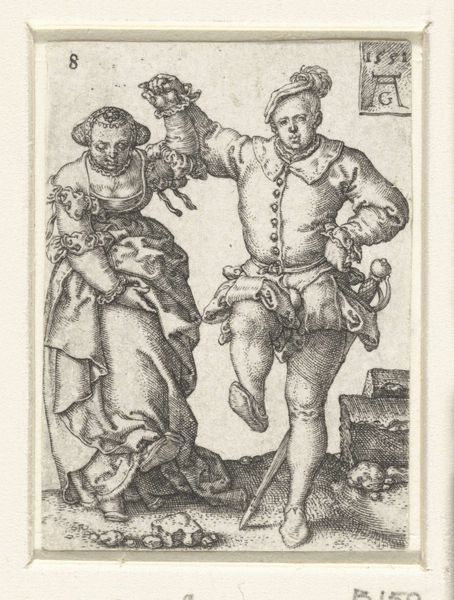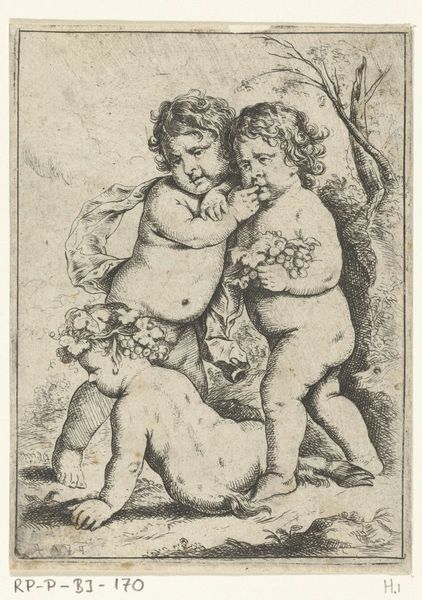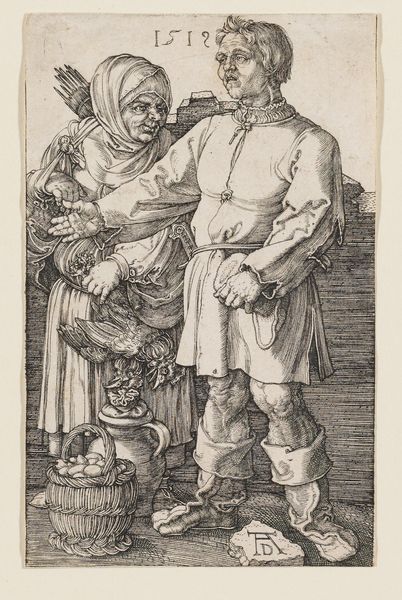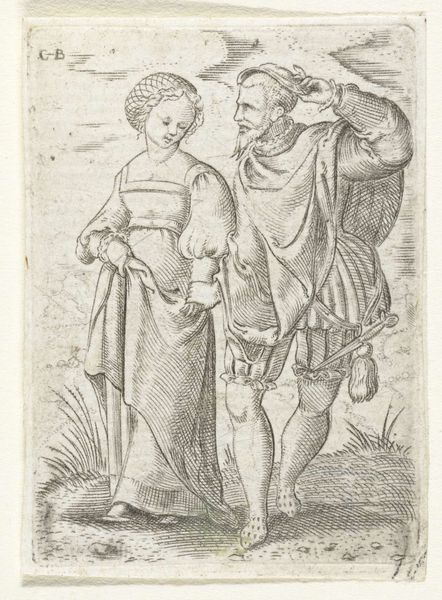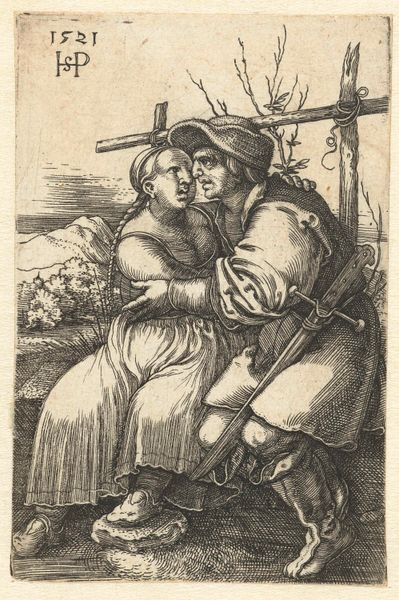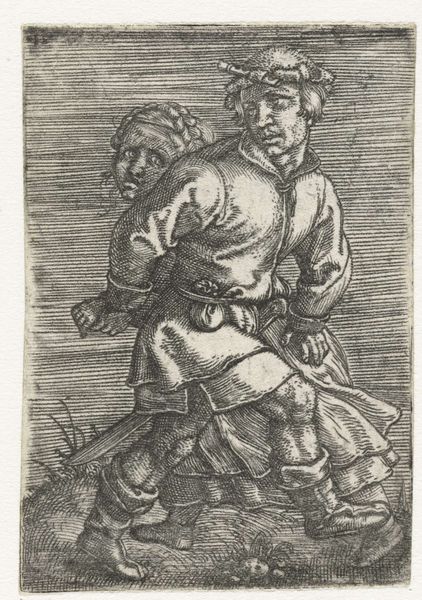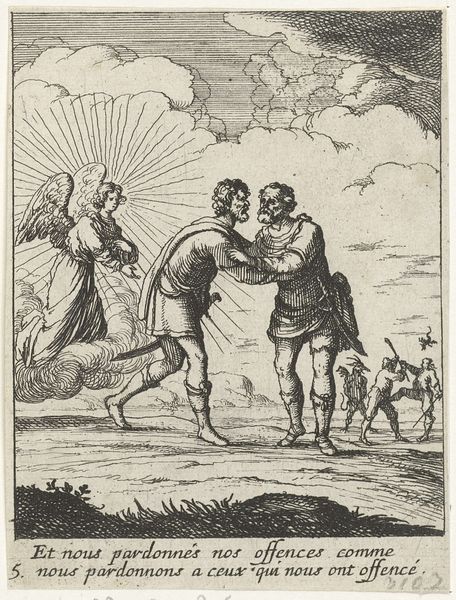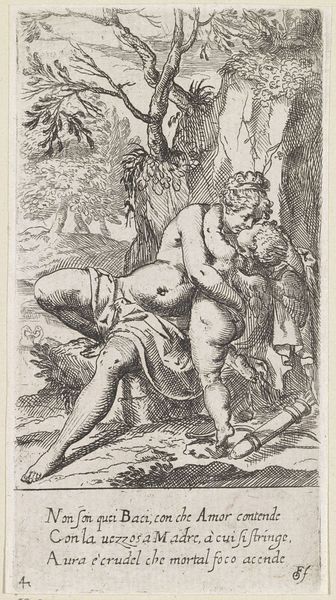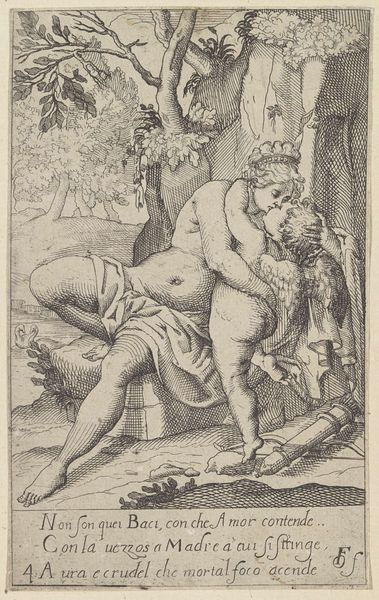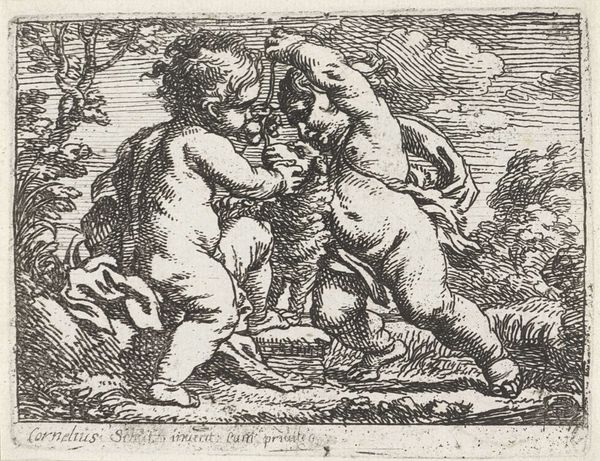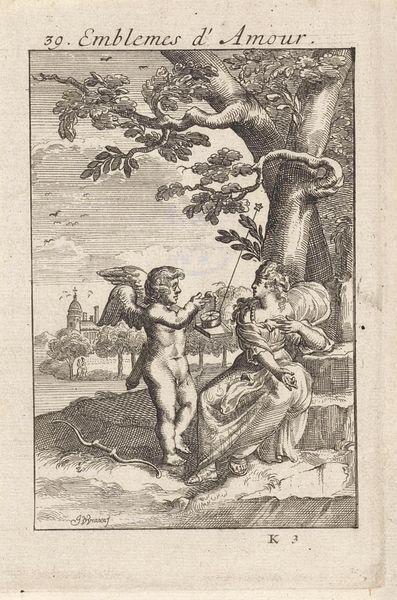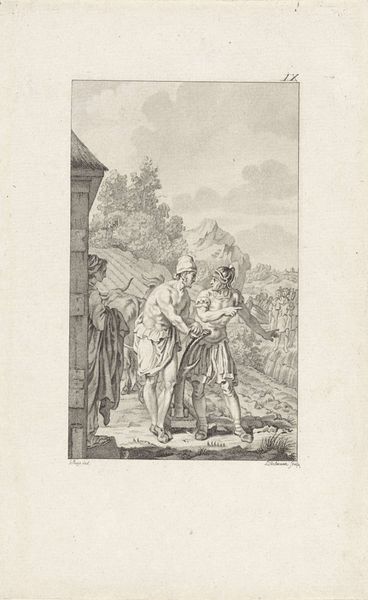
print, engraving
#
baroque
# print
#
pen sketch
#
pencil sketch
#
sketch book
#
figuration
#
personal sketchbook
#
sketchwork
#
pen-ink sketch
#
line
#
pen work
#
sketchbook drawing
#
genre-painting
#
sketchbook art
#
engraving
#
initial sketch
Dimensions: height 95 mm, width 75 mm
Copyright: Rijks Museum: Open Domain
Editor: This print, "Vrouw met haar dronken echtgenoot," made sometime between 1580 and 1642 by Nicolaes Weydtmans, depicts a woman assisting a stumbling, drunk man. It feels… cautionary, almost a moralizing statement. What do you see in this piece, beyond the surface narrative? Curator: It’s fascinating how Weydtmans uses a seemingly simple domestic scene to engage with broader societal anxieties. The work functions as a visual commentary on gender roles, class, and the pervasiveness of drunkenness in 17th-century life. The woman’s supportive, yet strained posture – what does that tell us about the labor, both physical and emotional, that's often invisibilized in patriarchal societies? Editor: I see what you mean. Her expression isn't exactly joyful. Is it commentary on the imbalance of power within marriage? Curator: Precisely. Consider how popular prints like these were distributed and consumed. They served not just as art but as a form of social critique. This image participates in a larger discourse around domestic order and the disruption caused by male inebriation. How might this resonate differently depending on the viewer’s own position within the social hierarchy? Editor: It’s interesting to think about who would have been buying and interpreting these images back then. Maybe women found a dark humor or validation of their own struggles within the household. Curator: Exactly. The artist isn't merely representing a drunk man and his long-suffering wife; Weydtmans engages us to reflect critically on the dynamics of early modern society, challenging our own assumptions and values. It shows how art reflects life and how life informs art. Editor: I never considered art from this period could offer such complex critiques! Thanks! Curator: My pleasure. Examining art through the lens of social context illuminates just how powerful images can be.
Comments
No comments
Be the first to comment and join the conversation on the ultimate creative platform.
